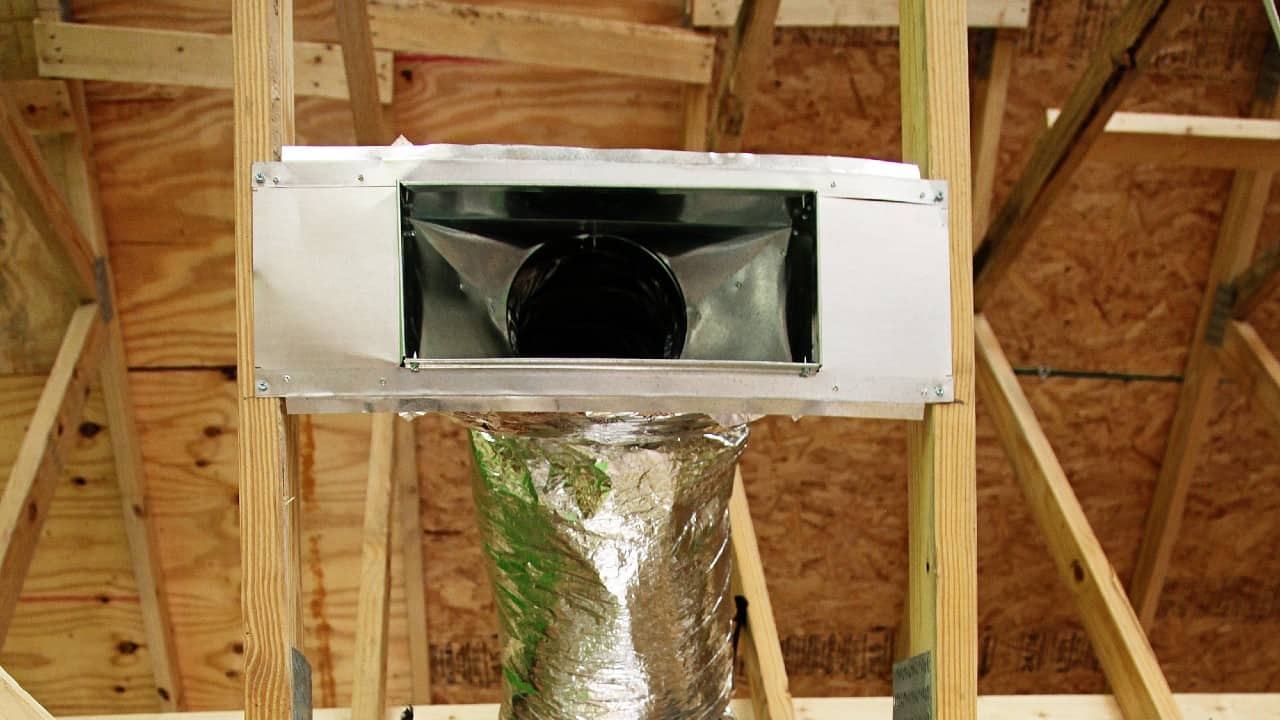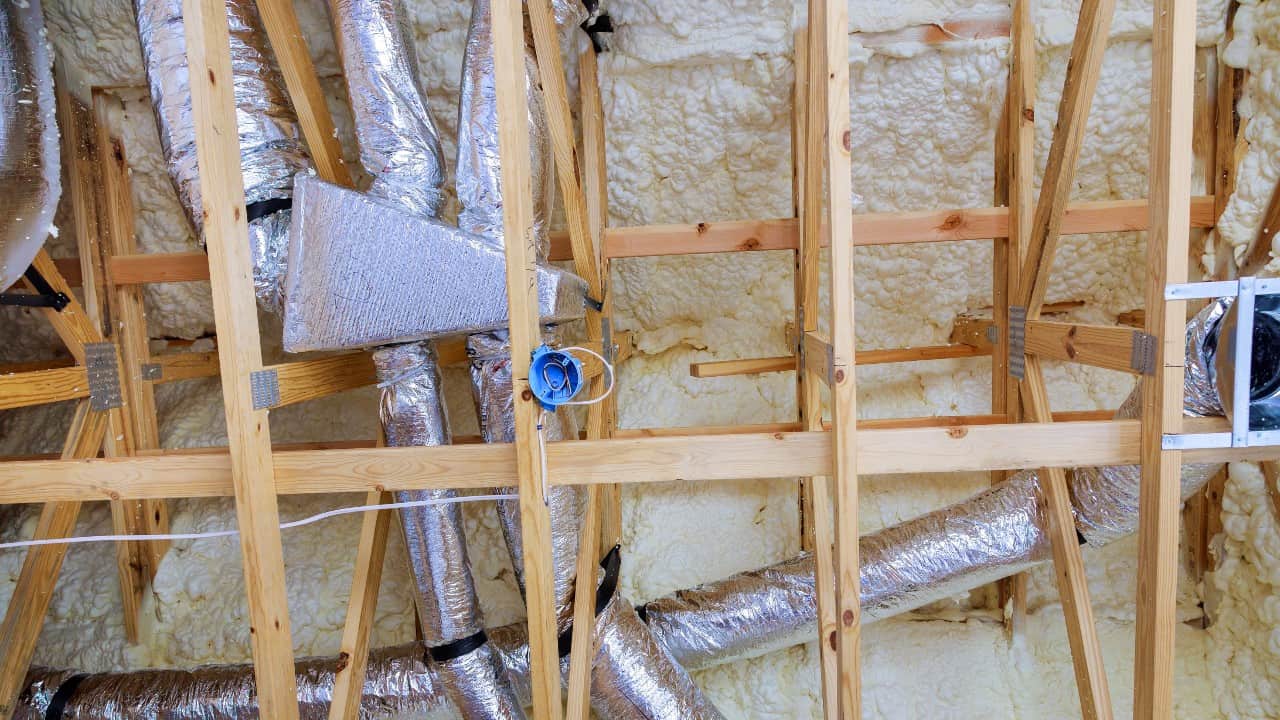Advantages of Venting Bathroom Fan into Attic Space

Venting bathroom fan into attic space – Directing bathroom fan exhaust into the attic offers numerous benefits that contribute to the overall well-being and comfort of a home. These advantages encompass improved air quality, reduced moisture accumulation, and prevention of mold growth, fostering a healthier indoor environment.
When it comes to venting bathroom fans into the attic space, selecting the right equipment is crucial. Nutone bathroom fans 695c offer exceptional performance and reliability, ensuring optimal ventilation and moisture control. Their powerful motors and efficient blades effectively remove excess humidity and odors, creating a healthier and more comfortable indoor environment in your attic space.
Improved Air Quality
- Venting bathroom fans into the attic effectively removes moisture-laden air, pollutants, and odors generated during bathing, showering, or other bathroom activities.
- This continuous air exchange helps maintain a healthier indoor air quality, reducing the risk of respiratory problems and allergies associated with stagnant air.
Reduced Moisture
- Bathrooms are prone to high humidity levels, which can lead to condensation on surfaces and the growth of mold and mildew.
- Venting bathroom fans into the attic helps remove excess moisture, preventing condensation and the associated damage to walls, ceilings, and fixtures.
Prevention of Mold Growth
- Mold thrives in moist environments, and bathrooms are particularly susceptible to mold growth due to high humidity levels.
- Proper ventilation through bathroom fans directed into the attic effectively reduces moisture, creating an unfavorable environment for mold growth and preventing the associated health risks and property damage.
Energy Savings
- By removing moisture from the bathroom, venting into the attic can reduce the load on HVAC systems, particularly during the summer months.
- This reduction in humidity allows air conditioners to operate more efficiently, potentially leading to energy savings.
Methods for Venting Bathroom Fan into Attic Space

Venting a bathroom fan into the attic space can be achieved through two primary methods: direct venting and indirect venting. Each method offers distinct advantages and considerations, and the choice depends on factors such as the attic’s accessibility, insulation, and the length of the vent run.
Direct Venting, Venting bathroom fan into attic space
Direct venting involves running the vent duct directly from the bathroom fan through the attic to the exterior of the house. This method is straightforward and provides the most efficient ventilation as it minimizes airflow resistance and allows for a shorter vent run.
Materials Needed:
- Bathroom fan
- Vent duct (flexible or rigid)
- Duct tape
- Vent cap
- Roof flashing
Steps:
- Install the bathroom fan according to the manufacturer’s instructions.
- Attach the vent duct to the fan outlet and secure it with duct tape.
- Run the vent duct through the attic, ensuring it is properly supported and does not obstruct any obstacles.
- Cut a hole in the roof for the vent cap and install the flashing around the hole.
- Insert the vent cap into the hole and secure it with screws.
Indirect Venting
Indirect venting involves connecting the bathroom fan to a central ventilation system or a soffit vent in the attic. This method is preferred when the attic is inaccessible or poorly insulated, or when the vent run is long.
Materials Needed:
- Bathroom fan
- Vent duct (flexible or rigid)
- Duct tape
- Central ventilation system or soffit vent
Steps:
- Install the bathroom fan according to the manufacturer’s instructions.
- Attach the vent duct to the fan outlet and secure it with duct tape.
- Run the vent duct to the central ventilation system or soffit vent and connect it securely.
- Seal all connections with duct tape to prevent air leaks.
Considerations for Venting Bathroom Fan into Attic Space

When venting a bathroom fan into the attic, several crucial factors must be considered to ensure optimal ventilation, safety, and longevity of the system.
Building Codes and Regulations
Building codes and regulations vary across regions and municipalities. It is essential to consult local authorities to determine specific requirements for venting bathroom fans into attic spaces. These regulations often stipulate the minimum fan size, ductwork dimensions, and installation standards to ensure proper ventilation and prevent moisture buildup.
Attic Insulation
The presence of attic insulation can impact the effectiveness of venting a bathroom fan into the attic. Insulation can impede airflow, reducing the fan’s ability to exhaust moisture. In such cases, it may be necessary to install a fan with a higher CFM (cubic feet per minute) rating or consider alternative ventilation methods.
Ventilation Requirements
The size of the bathroom and the level of moisture generated determine the ventilation requirements. A larger bathroom or one with a shower or bathtub will require a fan with a higher CFM rating to effectively remove moisture and prevent condensation. Proper ventilation helps maintain indoor air quality and prevents mold growth.
Fan and Ductwork Size
Selecting the correct fan size and ductwork is crucial for optimal ventilation. A fan that is too small will not be able to adequately remove moisture, while a fan that is too large can create excessive noise and energy consumption. Ductwork should be sized appropriately to minimize airflow resistance and ensure efficient ventilation.
Maintenance and Longevity
Regular maintenance is essential to ensure the proper operation and longevity of the bathroom fan and vent system. Cleaning the fan blades and grills regularly will prevent dust and debris buildup, which can impede airflow. Inspecting the ductwork for leaks or blockages is also important to maintain optimal ventilation.
When it comes to venting bathroom fans, the attic space often presents itself as a convenient option. To ensure proper ventilation and avoid moisture buildup, it’s crucial to understand how to vent bathroom fans in the attic. For detailed instructions, refer to the comprehensive guide on how to vent bathroom fan in attic.
By following these steps, you can effectively channel moisture and odors out of your bathroom and into the attic, maintaining a healthy and comfortable indoor environment.